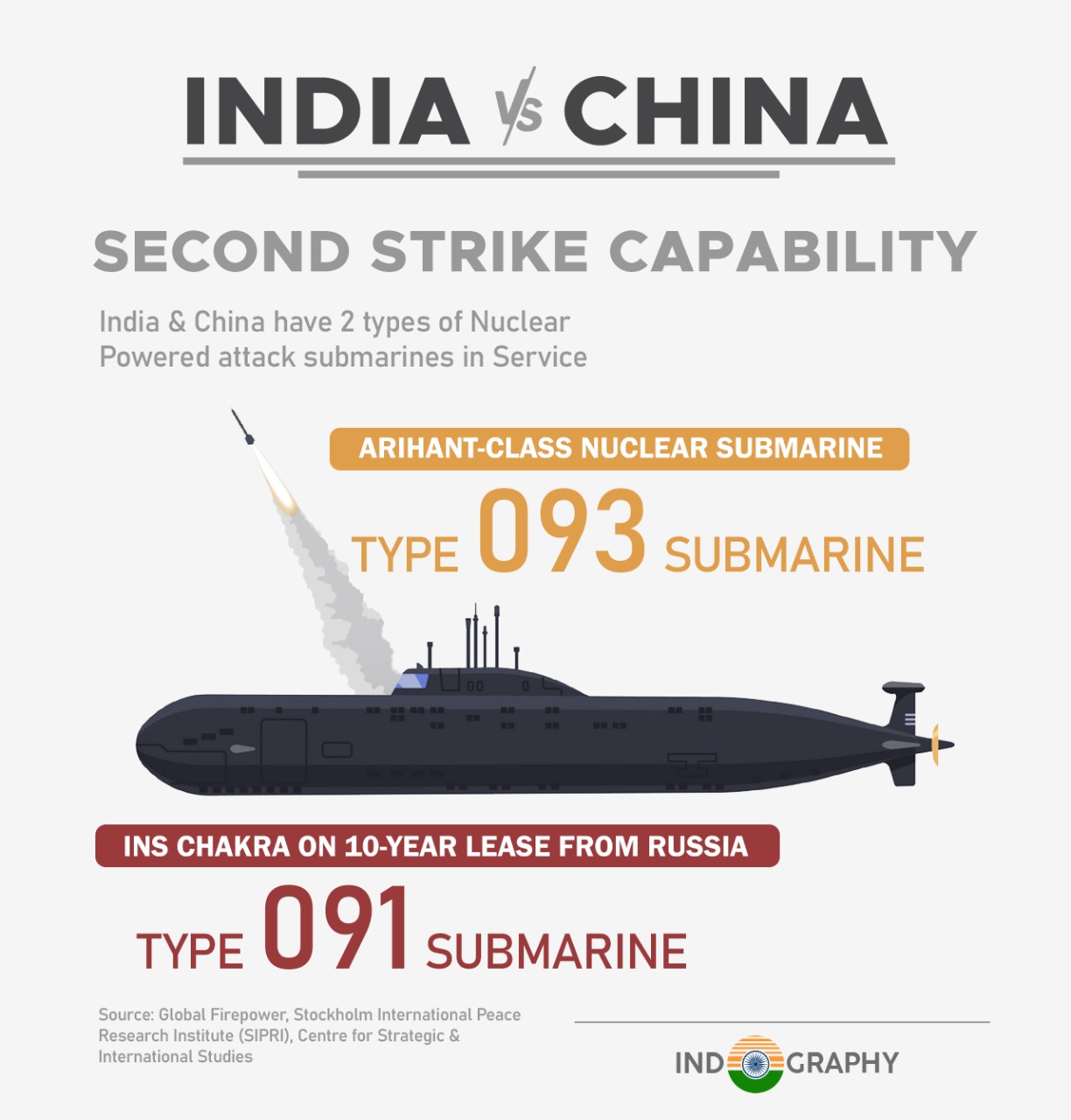India vs China: India and China are two of the world’s most populous nations, and their ongoing geopolitical tensions are well known. One key aspect of this rivalry is the race to achieve a credible second-strike capability, which refers to the ability to retaliate with nuclear weapons after a first strike by an enemy. In this article, we will explore the second-strike capabilities of India and China, with a specific focus on India’s submarine fleet.
China’s Second Strike Capability
China has invested heavily in its nuclear arsenal over the years, with a particular focus on ballistic missiles that can reach the United States. Its second strike capability is primarily based on land-based intercontinental ballistic missiles (ICBMs) and submarine-launched ballistic missiles (SLBMs). China’s current fleet of submarines includes five Type 094 Jin-class submarines, which are armed with JL-2 SLBMs that have a range of up to 7,000 kilometers. The Type 094 submarines are a key part of China’s nuclear deterrent strategy, and they are expected to be in service for at least another two decades.
In addition to its SLBM capabilities, China also has a variety of land-based ICBMs, including the Dongfeng-41, which is capable of reaching the United States. China’s land-based missiles are believed to be more reliable and accurate than its submarine-based missiles, but the submarine-based missiles provide an important second-strike capability that is difficult to defend against.
India’s Second Strike Capability
India’s nuclear arsenal is smaller than China’s, but it is still considered to be a credible deterrent. India’s second strike capability is primarily based on land-based missiles, but it also has a fleet of submarines that can be used to launch nuclear weapons. India currently has two types of submarines that are capable of carrying nuclear weapons: the Type 093 and the Type 091.
The Type 093 submarines are a relatively new addition to India’s fleet, having been inducted in the early 2010s. These submarines are nuclear-powered and can carry up to 12 cruise missiles or SLBMs. The Type 093 submarines are believed to have a range of around 5,000 kilometers, which means that they could potentially reach targets in China from the Bay of Bengal or the Arabian Sea.
The Type 091 submarines are older and less capable than the Type 093 submarines, but they are still an important part of India’s second strike capability. These submarines were inducted in the late 1980s and are believed to be armed with the Sagarika SLBM, which has a range of around 700 kilometers.
Conclusion
The second-strike capability is a crucial aspect of nuclear deterrence, and both India and China have invested heavily in this capability. China’s second strike capability is primarily based on land-based missiles and submarine-launched ballistic missiles, while India’s second strike capability is based on land-based missiles and a fleet of submarines that can be used to launch nuclear weapons. The Type 093 and Type 091 submarines are an important part of India’s second strike capability, and they provide a degree of flexibility and survivability that is difficult to achieve with land-based missiles alone. As the geopolitical tensions between India and China continue to simmer, the second-strike capability will remain a critical component of each nation’s nuclear deterrence strategy.








